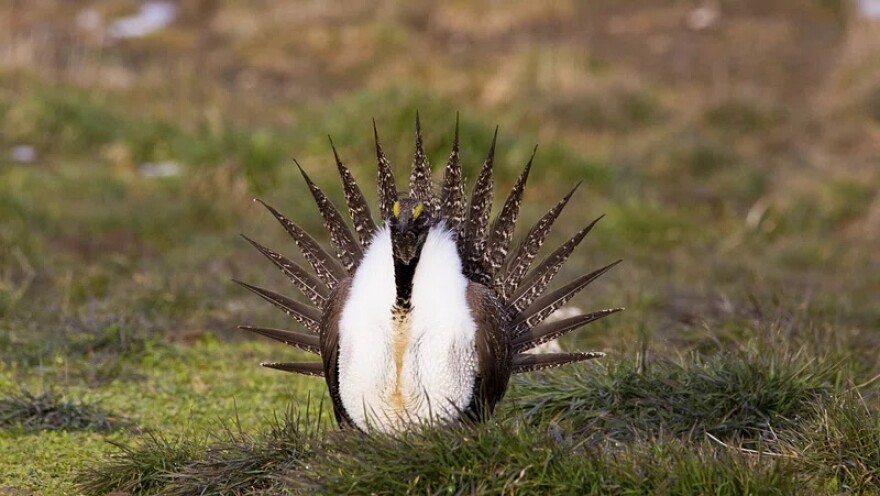A long awaited federal draft plan for greater sage grouse management in the Western U.S. has been released, and so far, Wyoming is cautiously optimistic.
The Bureau of Land Management (BLM) outlined six very varied options for managing sage grouse in western states, including Wyoming. The agency’s preferred option is ‘Alternative 5’ which seems to strike a balance between conservation and energy development, but Wyoming isn’t sure about the specifics yet.
“I mean, it's a 1,300 page document,” said Bob Budd, chairman of Wyoming’s Sage Grouse Implementation Team – which leads the state’s sage grouse management efforts. “It's just a long old grind you go through to see if it’s in a shape that works for Wyoming, works for sage grouse, works for our economy.”
Budd said they’ll be spending the coming weeks reading it with a fine tooth comb. The state provided a host of recommendations to the BLM that Budd hopes are included, like adding in some additional land to Wyoming’s current sage grouse protected areas and taking some out, based on new data.
“I'm encouraged by the fact that the preferred alternative aligns with a lot of the things that we think are important. That's a plus,” Budd said. “There are areas we already know that we're going to have to go back and work on, but we're optimistic we can sit down with the BLM at the state level and start through that process.”
Budd didn’t have specifics yet of what might not quite work for Wyoming, but he said that’ll become more clear in the coming weeks.
The whole process of revising greater sage grouse protections in the U.S. came about after populations have continued to decline, despite conservation efforts. Back in 2015, there was concern the species might even be listed as endangered, which could drastically change how sagebrush landscape is used.
Wyoming has long tried to prove it can manage the bird, rather than the federal government, and developed its own, unique strategy that includes ‘core areas.’ It tries to walk the line between protecting sage grouse and the energy industry. As of now, that’s the status quo in the state for sage grouse protections, so there was concern that this new, draft federal plan could trump those efforts. But, Budd said so far the state and feds seem to be communicating well.
“We've had a good track record of finding what will work. It's not finding middle ground, it's finding the things that will work for the benefit of the bird and not destroy our economy,” Budd said. “ And so I think we're going to lean heavily on our past experience.”
Wyoming’s Gov. Mark Gordon has expressed a similar sentiment at Budd.
“This was long-awaited and given Wyoming’s leadership on sage-grouse management, I have been concerned about how well the BLM would respect state-led efforts,” said Gordon in a press release. “While more analysis of this is needed, the first pass shows the BLM picked a preferred alternative that will allow for detailed comments that specifically addresses Wyoming’s concerns…”
That being said, some environmental and conservation groups are displeased by the draft plan.
“The habitat and the populations have been shrinking, the threats have been mounting, and the states and extractive industries have been whittling away at what were already inadequate protections since 2015,” said Greta Anderson, deputy director of Western Watersheds Project, in a press release. “We needed strong leadership from Biden’s Bureau of Land Management to give the sage grouse what the science says they need, across the broadest landscape possible. The preferred alternative here is not that.”
The public comment period for this draft is open through June 13th, and the BLM said it will hold 13 public meetings between now and then. Specifically in Wyoming the meetings will be in Cheyenne April 18, Rock Springs April 22, Worland April 23 and Casper April 24. A final plan is expected this fall.







